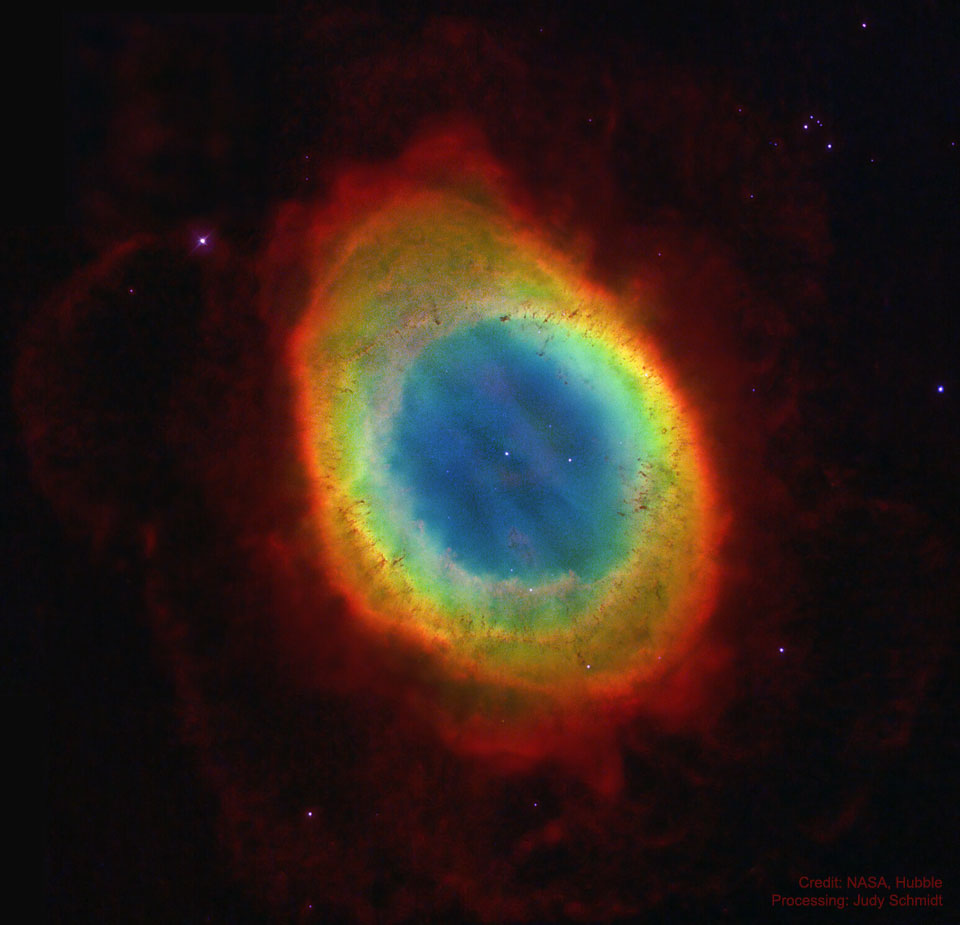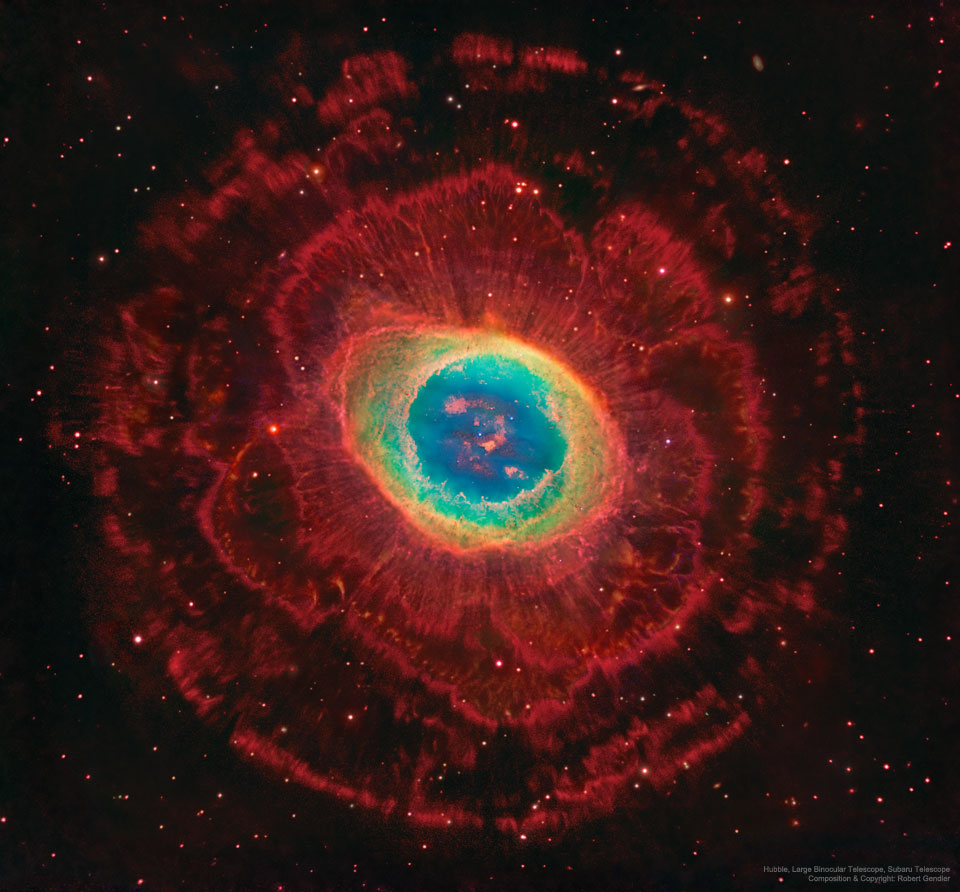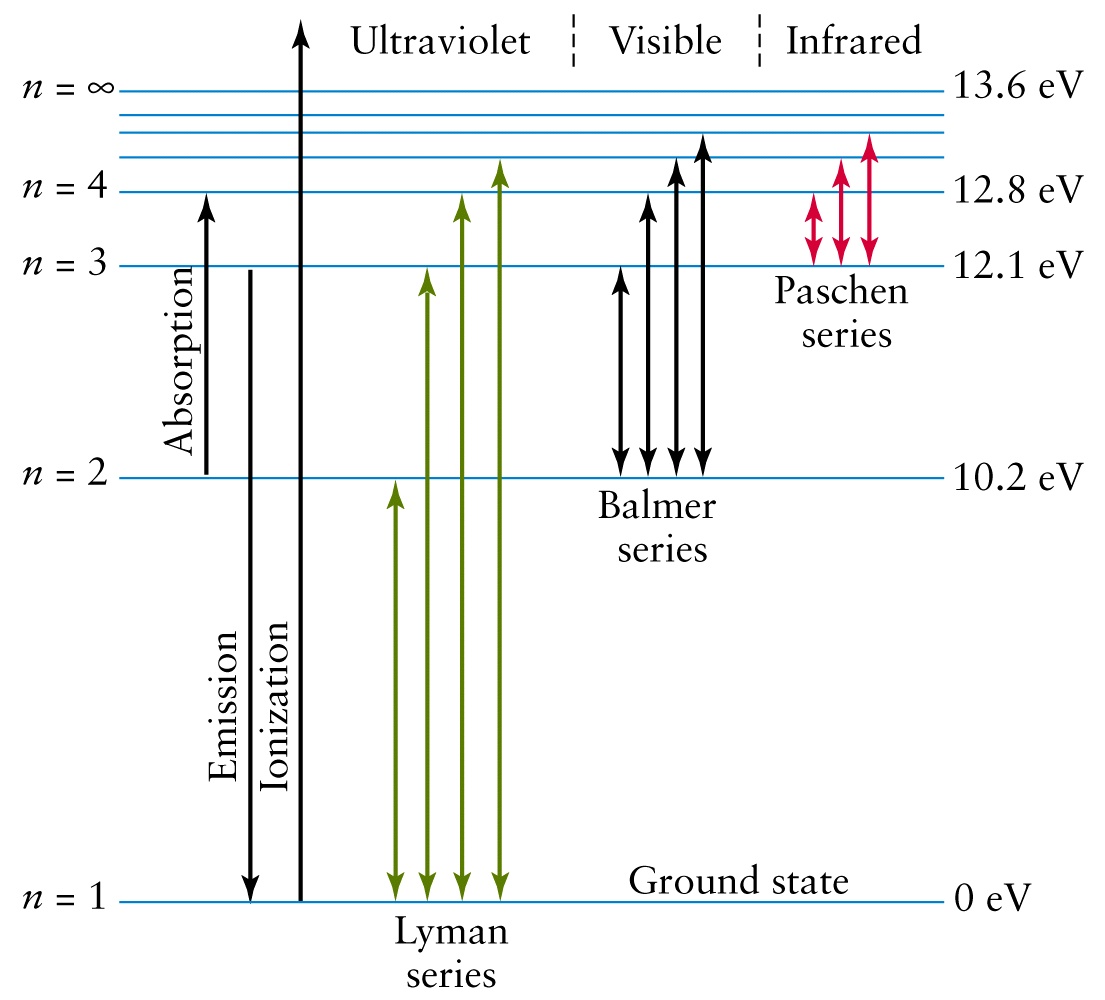JohnD wrote: ↑Tue Aug 17, 2021 9:53 am
The intense spectrum of colours across the Ring Nebula represent the different elements being ionised and then fluorescing at a distinct frequnency and colour. So the spectrum represents a gradient of elements in the nebula that depends on their distance from the star. How does this gradient form?
If the colours are produced by the elements suggested by Ann (F658N ([N II], red), F501N ([O III], green), and F469N (He II, blue), then it cannot be the atoms' masses, as blue - Helium, by far the lightest - is in the middle, nearest the star and apparently least affected by the solar winds and expansion of its outer layers. What other atomic property has so effectively differentiated the population of different atoms?
JOhn
Well, 658 nm is the wavelength of ionized sulfur. It's seems relatively straightforward that sulfur should be ionized and made to emit phtotons in the relative presence of an extremely hot white dwarf. Similarly, 501 nm is the wavelength of doubly ionized oxygen. Doubly ionized oxygen represents a higher degree of ionization that ionized sulfur.
I do find the 469 nm ionized helium mystifying. I checked the emission lines of helium, and there appears to be no helium line at 469 nm. There is one at 471.3 nm, however.
There is as far as I can understand nothing strange about helium being ionized close to an extremely hot star and and being made to emit photons of light as a result. Note that the gases and elements closer to the white dwarfs will receive more far ultraviolet light than gases and elements farther away from the star, and are likely to become more highly ionized and emit more energetic photons as a result.
This is, as well as I can understand, how ionization works:
In the picture above you can see various emission lines of hydrogen. Amateurs looking at pretty pictures are most interested in the Balmer series, since its emission lines are in the visible part of the electromagnetic spectrum.
Here is what happens in the Balmer series. An ultraviolet photon hits the electron of a hydrogen atom. The electron receives an extra helping of energy from the ultraviolet photon and is "kicked upstairs" to a higher "electron shell". The electron quickly "falls down" to its original electron shell again, and as it does so, it rids itself of the extra energy it received from the ultraviolet photon that hit it by emitting a photon of its own. Normally that will be a photon with a wavelength of 656 nm, corresponding to hydrogen alpha. You know, the red light that gives all those
red emission nebulas their color?
es, but if the ultraviolet photon that hit the electron of a hydrogen atom was particularly energetic, it could kick the electron "two floors up". And then the electron would fall down again while emitting a photon of hydrogen beta at 486.1 nm. And there are even higher "floors" and progressively more purple photons that could be emitted by the electron as it falls down from its lofty heights.
The way I understand it, a helium atom works
more or less like a hydrogen atom when it comes to ionization. The way I understand it, 471.3 nm represents a pretty high level of ionization for a helium electron. It has probably been kicked several floors up.
So, is a photon of 471.3 nm blue? Oh, sure it is!
Is 471.3 nm the dominant color of ionized helium? No, it doesn't look that way at all to me. Look at the first picture of this post, and take a look at that big fat line of yellow at 587.5 nm! Doesn't that look like the dominant color of helium to you? It sure does to me.
So let's put it like this: The blue color of 471.3 nm is not likely to dominate the light output of ionized helium, any more than the 486.1 nm blue light of hydrogen beta dominates any of our well-known ionized hydrogen emission nebulas. Because they are red from the 656.3 nm light of hydrogen alpha!
However, the inner parts of planetary nebulas are very often cyan-colored.
The bright cyan or green color of the inner parts of the Cat's Eye Nebula is real, and it results from doubly ionized oxygen at 501 nm. The red color in the outer parts likely results from hydrogen alpha. The reason why doubly ionized oxygen is so bright in the inner parts of many planetaries has to do with the fact that this oxygen emission requires very rarefied conditions and an onslaught of extremely energetic photons, which is exactly what you get near the central star of planetary nebulas.
So, in short: Is there blue light from helium emission at 471.3 nm in the central part of the Ring Nebula? Yes, undoubtedly. Is this blue helium emission brighter than the green emission from oxygen? No, absolutely not! Quite the opposite!
So the colors in the Hubble picture of the Ring Nebula are not exactly "true", but what we get is a reasonable approximation.
Ann
 M57: The Ring Nebula from Hubble
M57: The Ring Nebula from Hubble








